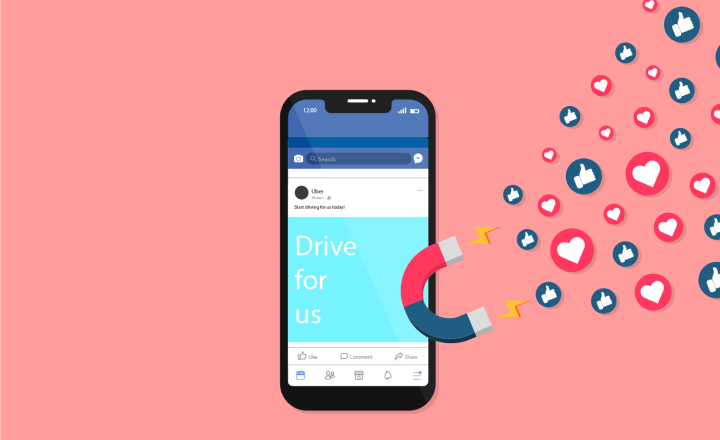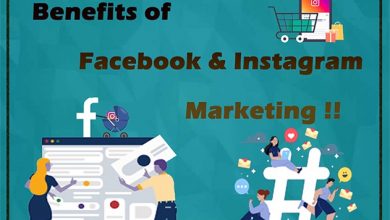Facebook lead ads in B2B Lead Generation
New era for lead generation in social media

Facebook offers the option of creating so-called lead ads. Especially in the B2B area, newsletters are an excellent tool for delivering exciting content to the target group. By deliberately registering, they are not viewed as spam or advertising. The content is desired and promises added value. Of course, your success also depends on the size of the recipients. However, many B2B companies are repeatedly faced with the problem of being able to increase their newsletter recipients only very slowly. An exciting solution for this is Facebook lead ads. We explain what to look out.
With the new lead ads from Facebook, B2B companies can generate leads with little effort and expense. Short forms can be filled out and sent directly to Facebook for various purposes. Two advantages are immediately apparent: On the one hand, internal handling in the leads generation company has some advantages. On the other hand, the interested party receives his information quickly and easily.
B2B’s focus primarily on these 6 points for an optimal result:
- The goals
Define exactly which B2B target group should be addressed. The creation of different personas is suitable for this. To do this, you will develop three to four average customers and prospects with your characteristics. This includes your hobby, gender or marital status. So full characters are created. With their help, you can make excellent and targeted target groups on Facebook. Another possibility is the use of retargeting and lookalike audiences.
2.The conditions
The Facebook Business Manager is an essential requirement for placing Facebook Ads. To do this, you need a profile of your B2B company on Facebook with the corresponding business manager.
Also, check whether a connection to your CMS is possible. Otherwise, all collected recipient data must be regularly downloaded via CSV file and uploaded to your own CMS or email dispatch system.
The addresses are then transferred directly to your system. If that doesn’t work, you can download the list from Facebook and process it manually.
3.The hurdles
It would help if you viewed the Facebook Lead Ads form like a form on your website. The ideology of the data economy also applies here. In addition to the legal aspects, this is also a conceptual aspect. Remove hurdles with a small number of form fields.
You should also clearly convey to the user what he is using his data. Write explicitly about registering for a newsletter or sending info packages. Disguising it would be wrong anyway, as unwanted leads are of no use to you and only cause costs. Last but not least, data protection guidelines must be included.
4.The lead goal
No matter how simple the campaign is and how easy it is to reach the target group: You always need a lead goal. Because hardly anyone gives out their contact details for no reason, therefore, you have to offer something to your lead in return. This can be an information package, a whitepaper or a regular newsletter. No matter what it is, there has to be a real added value.
5.The implementation
Now that the connection between Facebook and your system is established, you can start advertising. Right from the start, you should pay attention to a clean and logical campaign structure. This means that the names are always rational and understandable, and the B2B campaign branches like a root into more and more details.
At the campaign level, you define the goal of “lead generation”. You should create one audience for each ad group. You can also choose your budget and placements here. At the level of the advertisements, the ads that should lead to the forms are created by the user.
The unique thing about lead ads is precisely these forms. Ideally, you create these in the Business Manager under Post Options and Lead Ad Forms. Similar to target groups, they are then added at the level of the advertisements in the advertisement manager using drag & drop.
Ideal because you can create several similar forms one after the other to test them against each other. A clear naming should be a matter of course here so as not to select the wrong format. Another way is to create the forms directly in the advertisement level.
6.The optimization
Particularly important: pay attention to your defined goals. In the next step, you compare them with the campaign goals. It would help if you did not neglect these goals in the subsequent optimization. Cost per lead or just the amount of leads?
As a rule, the first significant success does not come immediately with the first campaign. This is easy, and you shouldn’t let it discourage you. Facebook campaigns take routine. The basis for this is to check and optimize them at least once a week.
To do this, you can test various payment options, target groups, placement and schedules at the ad group level. Within the ad groups, the advertisements can still compete against each other with text and image variants and various forms. This requires constant control, evaluation and adjustment.
A nice side effect: you get to know your B2B target group better and can incorporate this into the newsletter.
Conclusion
Facebook lead ads are ideally suited for targeted lead generation, especially in the B2B area. With the detailed targeting options, you can define any B2B target group. With a little preparatory work, the recipients are automatically transferred to your own CMS system. A little patience is required when optimizing. But it pays off. It increases the B2B leads of your B2B company in a targeted manner.





